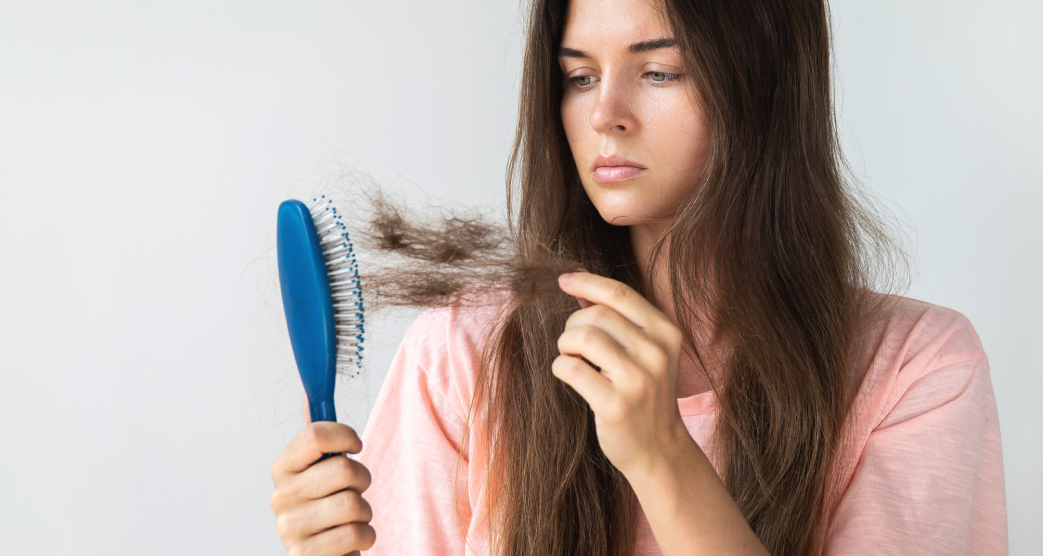Breaking News Blast
Stay updated with the latest news and insightful articles.
Hair Today, Gone Tomorrow: The Surprising Science Behind Hair Loss
Uncover the shocking truths about hair loss! Explore the surprising science behind thinning locks and discover what you can do today.
Understanding the Phases of Hair Growth: What You Need to Know
Understanding the phases of hair growth is essential for anyone interested in maintaining healthy hair. The hair growth cycle is typically divided into three primary phases: anagen, catagen, and telogen. Anagen is the active growth phase, lasting anywhere from two to seven years, during which hair follicles produce new hair. Following this phase is the catagen phase, which is a transitional stage lasting about two to three weeks, where the hair follicle shrinks and detaches from the hair shaft. Lastly, the telogen phase is the resting phase, lasting around three months, after which the hair falls out, making way for new growth.
Each of these phases plays a crucial role in the overall health and appearance of your hair. During the anagen phase, the health of your scalp and hair involves factors like nutrition, stress management, and overall well-being. In contrast, disruptions during the catagen and telogen phases can lead to hair thinning or excessive shedding. Understanding these phases not only helps in recognizing normal hair loss but also emphasizes the importance of a consistent hair care routine.

Top Causes of Hair Loss: Are You At Risk?
Understanding the top causes of hair loss is essential for anyone concerned about their hair health. Various factors contribute to this common issue, including genetics, hormonal imbalances, and medical conditions. For instance, hereditary hair loss, or androgenetic alopecia, affects both men and women and is often a leading cause of thinning hair. Other significant contributors can include:
- Stress: High stress levels can lead to temporary hair loss, known as telogen effluvium.
- Nutrition: A deficiency in vital nutrients, such as iron and proteins, can weaken hair follicles and lead to shedding.
- Medical Conditions: Disorders like thyroid disease or alopecia areata can also cause noticeable hair loss.
It is crucial to recognize your individual risk factors to take preventive measures. Factors such as age, gender, and certain lifestyle choices can increase susceptibility to hair loss. For example, as people age, the rate of hair growth naturally slows down, and the hair may become thinner. Moreover, hormonal changes due to pregnancy or menopause can also play a significant role. Are you at risk? It’s important to assess your family history and any underlying health issues. If you're noticing unusual hair thinning, consulting a healthcare professional can help identify the cause and determine an appropriate course of action.
Can Your Diet Really Affect Your Hair Health?
The connection between your diet and your hair health is often underestimated. Nutritional deficiencies can lead to various hair problems, including hair loss, thinning, and lackluster locks. Key nutrients like proteins, vitamins, and minerals play crucial roles in maintaining the strength and vitality of your hair. For example, a diet rich in omega-3 fatty acids, found in fish and flaxseeds, can help promote a healthy scalp, while iron from leafy greens and beans is essential for oxygen transport to hair follicles. Incorporating a balanced diet, including plenty of fruits, vegetables, and whole grains, can enhance not just your overall health, but also the gleam and resilience of your hair.
Moreover, certain dietary choices have been linked directly to hair health. For instance, a lack of biotin can lead to brittle hair and hair loss, while adequate zinc intake promotes hair growth and repair. Ensuring you consume a well-rounded diet can minimize the risk of hair-related issues. To optimize your hair's health, consider adding foods such as eggs, nuts, and berries to your weekly meals. Not only do they provide essential nutrients, but they also encourage hair vitality and shine. Ultimately, a mindful approach to your eating habits could be the secret to achieving healthier, fuller hair.